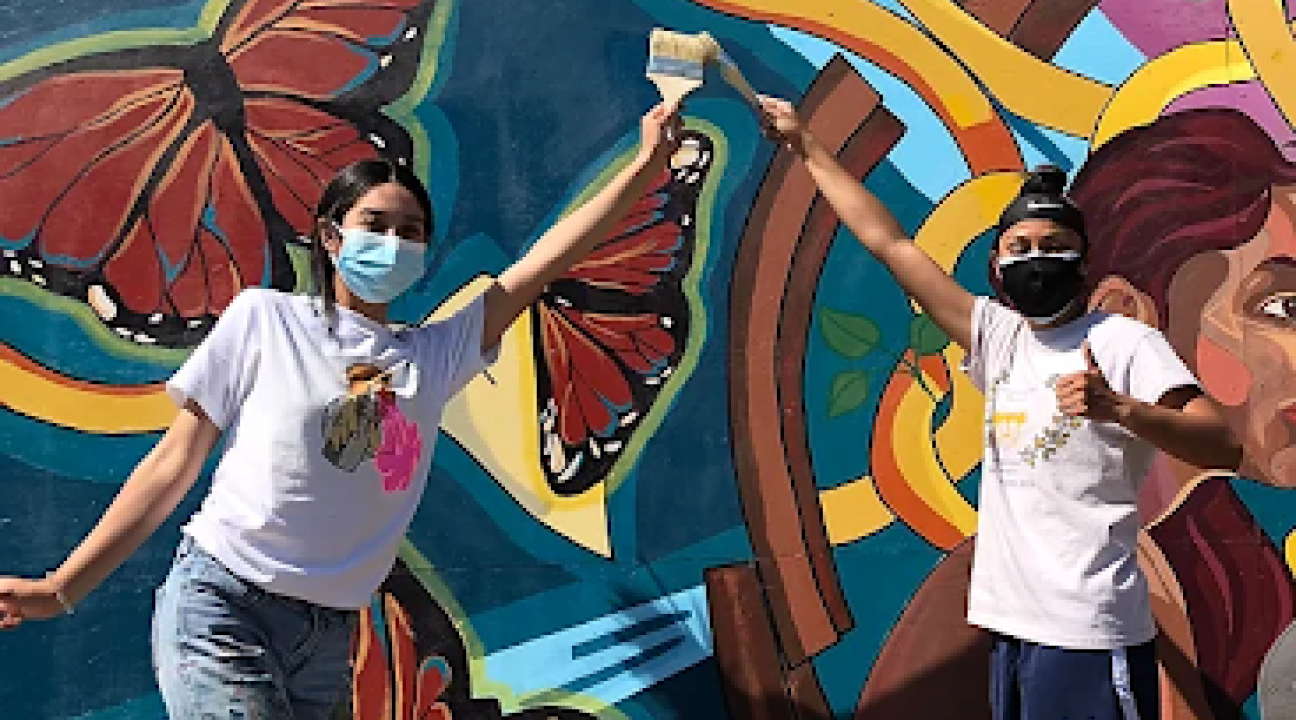Service-Learning Spotlight: Emily Hostutler Case Study
“I believe service-learning did have a big impact on my life decisions and I am truly grateful to have been part of this experience,” says Eliza Velarde, a former Sonoma State student, who now works with low-income women, children, and infants. Velarde was a student in Emily Hostutler’s 2017 service-learning class. This class partnered with Petaluma Bounty, following the Tubbs fire, one of the most destructive wildfires to ever affect Sonoma County.

Professor Emily Hostutler
“It was not until the Tubbs fire that occurred that Fall, that our experience correlated almost perfectly with the material. Later in the semester, we served at Petaluma Bounty Farm, a community garden where together as a class we planted vegetables, cleaned up debris, and most importantly, became part of the community,” she recollected. As a first generation college student, Hostutler’s class engaged, rewarded, and motivated her to further participate in her community.
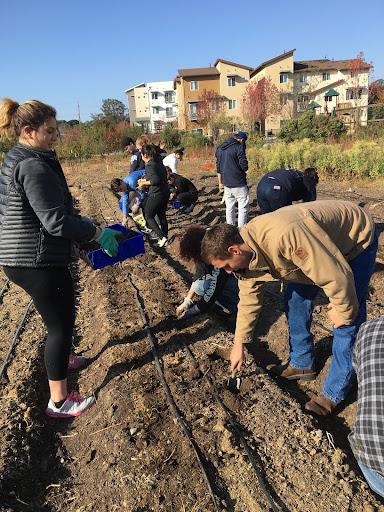
Hostutler’s students in 2017, working on the
Petaluma Bounty farm to plant produce
during a time of widespread food insecurity due
o the Tubbs fire.
“I am very much about student forwardness, students first,” Emily Hostutler voiced. Hostutler is an artist, writer, community partner, and Sonoma State professor who specializes in community engaged learning practices and experiences, where students blend academics with civic duty and community service. A recipient of the Koret Scholar Award in 2020/2021 and of the 2022-2023 Educational Enhancement Award, she works alongside her students in their creation of projects that benefit communities in Sonoma County. Most recently, she and her students painted the Reciprocity Mural at Petaluma Bounty.
Suzanne Grady, Director of Petaluma Bounty, says of the project, “Working with SSU and Prof. Hostutler allows us to connect more deeply with leaders of our future and better understand what is important to new generations of our community.”
For Hostutler, these projects wholly embrace service-learning, rather than just volunteering. “I see service-learning as a discipline in itself. It’s not necessarily about rewarding an individual or doing a good thing or virtue signaling. It’s really about having a deep understanding of a community need and a deeper understanding about how you can learn from that community. It’s a reciprocal relationship that acts like a textbook for the class.” She and her students aim to not only benefit a community, but be an active and engaged part of it. Volunteering does make an impact, she added, however, the importance of any community service is reciprocity and deeper relationships.
Beyond Hostutler’s continued collaboration with Petaluma Bounty, she and her classes have also adapted and expanded on the Writing Partners model. Her students began pen pal relationships with fifth grade students at a local elementary school. Together, the students exchanged over 1200 letters, sharing their lives and forming bonds. At the end of the process, they met, an experience that was emotional, fulfilling and rewarding for everyone involved. The project not only fostered connections within a community. It also returned to Hostutler’s composition roots in the simplest form, by engaging students’ writing skills, which ties in with her academic goal for her classes.
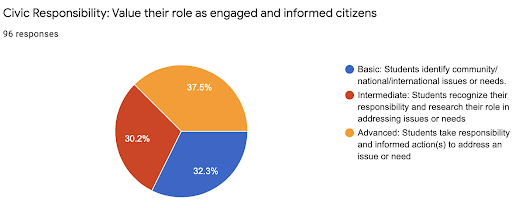
Data from recent study Emily Hostutler conducted with funding from the Koret
Scholar Award on how service-learning impacts student achievement and
understanding long-term.
There is also a significance in the demographics of students Hostutler teaches in the meaningfulness of the service-learning pedagogy. Most of her students are freshmen at Sonoma State, so her classes are often their first experience with the university and potentially with the local community. Many of the students are also first generation college attendees and are part of the Educational Opportunity Program. Providing these students with opportunities to build community relationships can be incredibly special, as Hostutler remarked that most of the project subjects are the students’ own ideas. This creates an environment of collaboration, where the students’ get to have autonomy and passions respected and uplifted, with Hostutler providing guidance and connections. “It’s a perfect mix of trusting students bringing in their own knowledge, their own interest, the ways they want to impact their world, and then here’s the framework for how I’ve made that work, let’s research together how that might work better with [current circumstances].” She also mentioned that there is a particular uniqueness to these students being first-year students, saying, “My favorite part of working with freshmen is getting to be a learner myself. The freshmen will often bring the ideas and the energy and the enthusiasm for how we can make an impact locally or more broadly. I think sometimes students might not realize that they have the agency to design something like this and to do that so early in your college career, there’s so much you can get out of it.”
Hostutler’s focus with the Koret Scholars Award for 2021/2022 was to examine and measure the impact of service-learning projects on her students over a period of time, which makes the freshmen demographic so perfect. “We’re measuring our core values and testing whether we’re really fulfilling our mission,” she explained. The results of the Koret study were positive, and showed that through service-learning, students were able to value themselves as informed and engaged community members, appreciate diversity, and utilize academic disciplines to serve the communities around them. The benefits of Hostutler’s curriculum not only was measured by the study’s findings, but by the success of her students outside of the classroom and post-graduation.
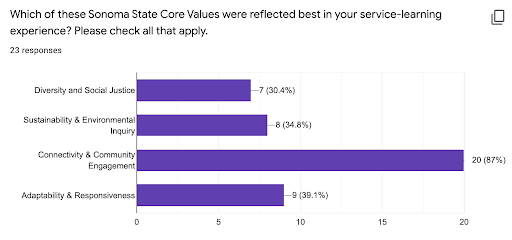
Data from Emily Hostutler’s recent study on how service-learning experiences
impact students in their academic journeys.
Emily Hostutler continues to engage the newest Seawolves and to guide projects that change both them and the community around them for the better. And for upperclassmen and transfer students, Hostutler encourages them to also take part in service-learning. “Service-learning can work in any discipline,” she says, regardless of the students’ major. She wants students to know that they can create their own service-learning projects, and that they can find support with faculty members across campus, as well as with the Center for Community Engagement. Emily Hostutler continually shows that she believes in her curriculum and that she is an ally and advocate for the students and the deepened and engaging experiences that service-learning provides. We at CCE are extremely honored to reflect on her work, and look forward to seeing what else she and her students will achieve.
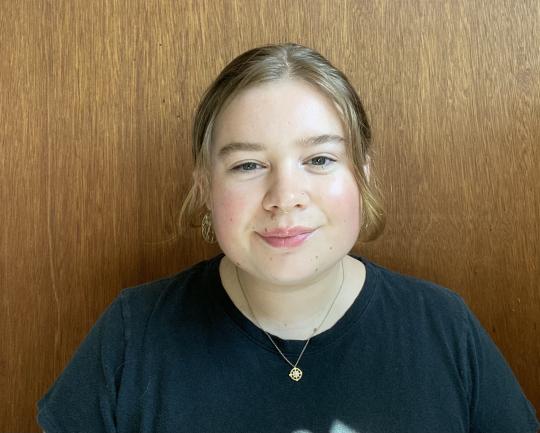
Author: Meryl Wenger


